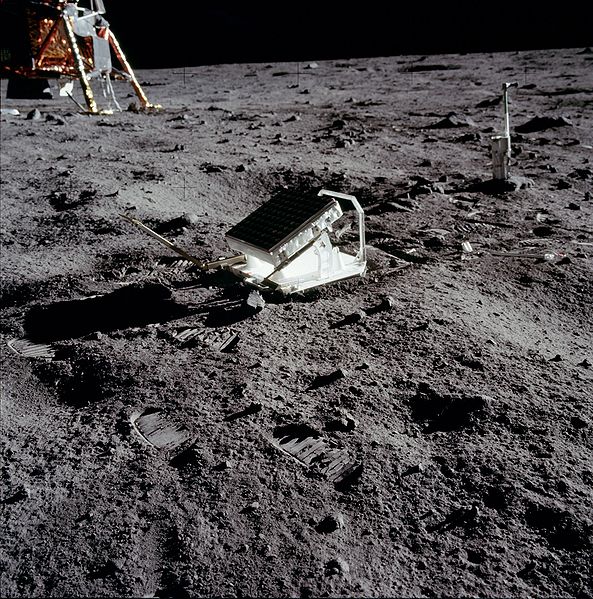Special delivery! See our visiting baby yaks (Dec. 20–Jan. 5) this holiday. Learn more
Science News
Measuring Moon Distance
May 21, 2010

In 1969, the Apollo 11 Lunar Module Eagle landed on the Moon, carrying two astronauts to its surface. Aside from taking photos and collecting samples of rocks and lunar regolith, Neil Armstrong and Edwin “Buzz” Aldrin deployed a number of scientific instruments, including a Laser Ranging Retroreflector.
The Laser Ranging Retroreflector consists of an array of corner prisms that reflects light back directly to its source. The astronauts of the Apollo 14 & 15 missions left similar reflectors on the surface, as did the Soviet Union’s automated Lunokhod 1 & 2 rover missions in 1970 and 1973.
What was the purpose of these reflectors? To accurately measure the distance between Earth and the Moon. Since the first reflector installation, scientists on Earth have shined powerful lasers toward the lunar surface, detecting the weak reflection of the light as it bounced back. Taking careful measurements of the amount of time it took for the light to return to Earth, scientists have measured the distance between Earth and its satellite to a matter of inches. And over time, they have determined that the Moon is gradually spiraling away at a rate of 38 millimeters per year.
They have also used the data to refine their knowledge of the Moon’s rate of rotation, which has in turn led to a better determination of the distribution of the Moon’s mass. The data suggest that the Moon may have a small liquid core.
In fact, last month scientists at UC San Diego located the missing reflector from Lunokhod 1. Looking at images from the Lunar Reconnaissance Orbiter (LRO), the physicists spotted the reflector, which had been missing for almost 30 years. They hope to put it to good use. “Lunokhod 1, by virtue of its location, would provide the best leverage for understanding the liquid lunar core, and for producing an accurate estimate of the position of the center of the moon—which is of paramount importance in mapping out the orbit and putting Einstein’s gravity to a test,” said Tom Murphy, head of the team.
(You, too, can help scientists by looking at LRO images. Get more info here.)
In addition, scientists have been able to get more information about our planet with the lunar reflectors. Triangulating on the Moon from two separate laser installations has improved our knowledge of Earth’s own rotation and crustal behavior, going so far as to measure the slowly-increasing distance between observatories in Maui and Texas.